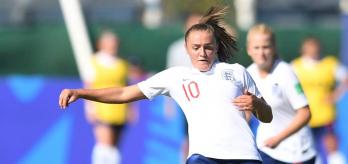Ferguson's Manchester United teams are fondly remembered for their attacking brand of football, but students of the game often applauded their organisation and positioning when they were not in possession of the ball.
Ferguson's United liked to dominate the middle of the park, employing a compact shape as their opponents brought the ball out from the back. Their success in the transition from attack to defence was a product of this control of space in key areas, enabling them to quickly transition from attack to defence.
Key principles out of possession
Almost a decade on from Ferguson's retirement, it is interesting to note that 4-4-2 remains a very popular defensive shape. Irrespective of the the formation a few key principles apply:
- Reduce the size of the pitch
- Close the space
- Keep the shape
- Apply pressure
Reduce the size of the pitch
For the defending team, the ten outfield players look to create a compact playing area and so force the opposition into tighter spaces. Unless the passing is of the highest quality, it is easier to force a turnover in possession when the space is compressed. Having a more compact central midfield area also encourages the team in possession to move the ball out wide, further restricting passing options from 360° to 180° and further increasing the chance of recovering the ball with a touchline press.
Close the space
There are two fundamental ways in which a team not in possession can reduce the space on the pitch for their opponents.
1. Narrow the pitch horizontally. This is done by bringing the wide players further infield so that the team are more compact. This makes them more difficult to break down in the middle of the park (horizontal compactness).
2. Compress the pitch vertically. This can be done by ensuring the three lines of players never have too much distance between them (vertical compactness). However, it should be noted a team can also play in a low block and be very compact.
Keep the shape
As the ball is moved forward, the defending team's job is to make it difficult for the opposition to play through them. They aim to keep their shape while individual players press their direct opponents. It is paramount that the side without the ball move as a team, ensuring they never leave gaps in their defensive, midfield and forward units.
Apply pressure
The best way to avoid space opening up which the opposition can exploit is to be aware of where the ball is moving and to shuffle across the pitch as a unit. The ultimate target is to regain possession.
For this to be achieved, the role of the ball-side central midfielder is pivotal. Once the defensive side's forward line is broken by the team in possession, this midfielder's mission is to cut off all options through the centre of the park with the intensity of the press inviting an error or, at the very least, forcing the opponent out wide.
Once the team, as a unit, have compressed the available space for the opposition, a high-pressing game can be activated to put the players on the ball under pressure and further reduce the options for the team in possession.
The press should be led by the ball-side striker or the forward closest to the ball. This player is the first trigger for the team to attempt to win the ball back. The striker may not necessarily get the ball at this initial stage, but the extra pressure exerted on the opposition hurries the play up and may force an error.
The ball-side central midfielder's role is to cut out any passes played through the middle.
Keeping an organised shape during the press ensures there will be players around the ball when possession is regained, allowing the team to transition to attack quickly, or failing that, to at least re-establish possession properly.
Summary
A rigid 4-4-2 formation when not in possession requires the team with the ball to break through three banks of players to attack their opponent's goal. Even though the defensive team do not have the ball, they are still able to control the pitch and thus dictate where the opposition play.
Once organised, the defensive line is relatively high, and can push the midfield line high, which, in turn, allows the front line to go and press. The width of the line is roughly the width of the penalty area, meaning that the only real playing space is outside this block or behind the defensive line.
Playing as a tight unit with a collective movement means that any passes into the middle of the pitch need to be of a high quality to break through the line, otherwise the ball-side central midfielder will have a good chance of either pushing the ball out wide, forcing an error or regaining possession for the team.
Once possession has been regained, the organised set-up enables the team to have numbers around the ball and to re-establish possession properly.
Attack wins you games, defence wins you titles







